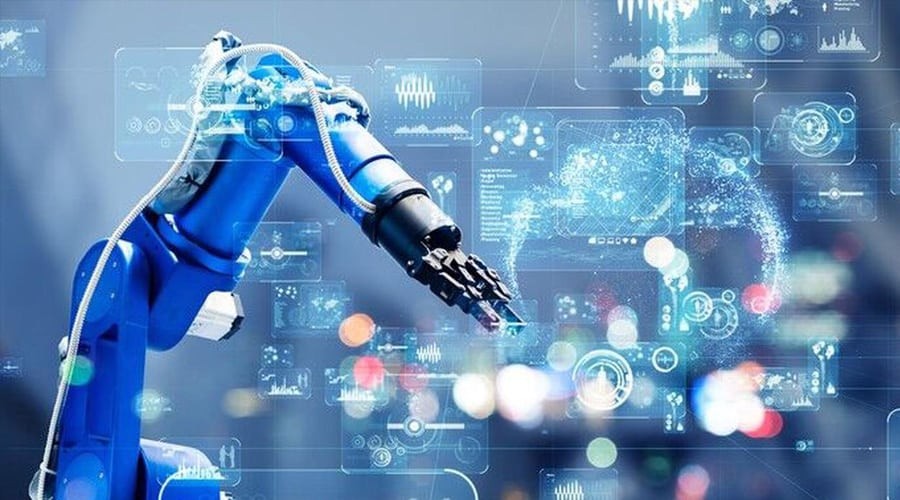
Imagine sitting down to write a blog post, your mind buzzing with ideas but struggling to find the right words. You stare at a blank screen, the cursor blinking like a impatient metronome. Now, picture a tool that not only suggests ideas but drafts entire paragraphs, designs visuals, and even tailors your content to your audience—all in seconds. This isn’t science fiction; it’s the reality of generative AI, a technology reshaping the way we create content. From bloggers to marketers, filmmakers to musicians, generative AI is transforming creativity, making it faster, more accessible, and, in many ways, more exciting. In this deep dive, we’ll explore how generative AI is changing content creation, weaving together real-world examples, expert insights, and practical advice to help you navigate this brave new world.
What is Generative AI, and Why Does It Matter for Content Creation?
Generative AI refers to artificial intelligence systems that can produce original content—text, images, videos, music, and more—by learning patterns from vast datasets. Unlike traditional AI, which might analyze data or make predictions, generative AI creates, mimicking human-like creativity. Tools like ChatGPT, DALL·E, and MidJourney are leading the charge, enabling creators to generate everything from blog posts to photorealistic artwork with minimal effort.
Why does this matter? Content creation is the backbone of industries like marketing, entertainment, and education. In 2024, businesses spent over $400 billion globally on content marketing alone, according to Statista. Generative AI slashes the time and cost of producing high-quality content, democratizing creativity for small businesses, solo entrepreneurs, and hobbyists. But it’s not just about efficiency—it’s about unlocking new creative possibilities. Let’s dive into how this technology is reshaping different facets of content creation.
The Impact of Generative AI on Writing
Writing has always been a labor of love, requiring hours of research, drafting, and editing. Generative AI is changing that. Tools like Jasper and Copy.ai can produce blog posts, social media captions, or ad copy in minutes. For example, a marketer tasked with writing 10 product descriptions can input a few keywords, and the AI will generate polished, SEO-optimized text tailored to the brand’s voice.
I experienced this firsthand while helping a friend launch her Etsy store. She needed catchy product descriptions for her handmade candles but was overwhelmed by the task. Using a generative AI tool, we inputted details like “cozy lavender scent” and “hand-poured soy wax,” and within seconds, we had a dozen compelling descriptions. After a quick edit to add her personal flair, she had professional-grade content ready to go. This speed is a game-changer, but it’s not without challenges. AI-generated text can sometimes feel generic or lack emotional depth, requiring human oversight to ensure authenticity.
- Benefits for Writers:
- Speeds up ideation and drafting, reducing writer’s block.
- Generates SEO-friendly content with minimal effort.
- Assists non-native speakers in creating polished text.
- Challenges:
- Risk of producing formulaic or repetitive content.
- Requires editing to align with brand voice or audience needs.
- Ethical concerns about originality and plagiarism.
Revolutionizing Visual Content Creation
Beyond text, generative AI is transforming visual storytelling. Tools like Stable Diffusion and Runway allow creators to generate stunning images, animations, and even videos from text prompts. For instance, a graphic designer can type “futuristic cityscape at sunset” and receive a high-resolution image in seconds, saving hours of manual work in Photoshop.
This technology is a boon for industries like advertising and gaming. Take the example of a small indie game studio that used MidJourney to create concept art for their sci-fi RPG. Unable to afford a full-time artist, they generated hundreds of unique assets, from alien landscapes to character designs, at a fraction of the cost. The result? A visually rich game that competed with bigger studios. However, as Wired points out, concerns about copyright and the use of artists’ work in training datasets have sparked debates about the ethics of AI-generated visuals.
- Key Advantages:
- Enables rapid prototyping of visual ideas.
- Reduces costs for businesses with limited budgets.
- Empowers non-artists to create professional-grade visuals.
- Potential Drawbacks:
- Legal uncertainties around AI training data.
- May reduce demand for traditional artists in some sectors.
- Quality varies depending on the tool and prompt precision.
Transforming Audio and Video Production
Generative AI isn’t limited to static content—it’s making waves in audio and video production too. Tools like Descript can generate realistic voiceovers from text, while platforms like Synthesia create lifelike video avatars. Imagine a YouTuber who wants to produce content in multiple languages. With AI, they can generate dubbed versions of their videos with natural-sounding voices, reaching global audiences without hiring translators.
I recently saw this in action when a friend, a podcaster, used AI to clean up her audio and add background music tailored to her episode’s mood. What used to take hours in editing software was done in minutes. However, the rise of deepfake technology—powered by generative AI—raises concerns about misinformation, as highlighted by MIT Technology Review. Creators must balance innovation with responsibility to maintain trust.
- Audio/Video Benefits:
- Streamlines editing and post-production processes.
- Enables multilingual content creation at scale.
- Enhances accessibility with automated captions and translations.
- Risks:
- Potential for misuse in creating deceptive content.
- High-quality outputs require careful prompt engineering.
- May not fully capture human emotion or nuance.
Comparison Table: Traditional vs. AI-Powered Content Creation
| Aspect | Traditional Content Creation | AI-Powered Content Creation |
|---|---|---|
| Speed | Slow, often taking hours or days per piece. | Fast, generating content in seconds or minutes. |
| Cost | High, requiring skilled professionals or freelancers. | Low, with affordable or free AI tools. |
| Scalability | Limited by human resources and time. | Highly scalable, producing bulk content effortlessly. |
| Creativity | Relies on human imagination, unique but time-intensive. | Augments creativity but may lack originality. |
| Customization | Highly tailored but requires manual effort. | Easily customizable with prompts, but needs editing. |
| Ethical Considerations | Minimal, focused on plagiarism or sourcing. | Complex, involving data ethics and misinformation risks. |
How Generative AI Enhances Personalization
One of the most exciting aspects of generative AI is its ability to hyper-personalize content. By analyzing user data, AI can tailor content to individual preferences, boosting engagement. For example, Netflix uses AI to generate personalized thumbnails based on your viewing history, as noted by Forbes. A viewer who loves action movies might see a thumbnail emphasizing explosions, while a romance fan sees a heartfelt moment.
In marketing, this personalization is a goldmine. AI tools can create thousands of email variations, each addressing the recipient by name and referencing their interests. A small business owner I know used an AI-powered email platform to send personalized newsletters to her 5,000 subscribers. The result? A 30% increase in open rates and a surge in sales. However, over-reliance on personalization can feel invasive, so striking a balance is key.
- Personalization Perks:
- Boosts engagement through targeted content.
- Saves time in creating audience-specific materials.
- Enhances customer experience across platforms.
- Considerations:
- Privacy concerns around data usage.
- Risk of over-automation, reducing authenticity.
The Role of Generative AI in SEO and Content Strategy
Search engine optimization (SEO) thrives on fresh, relevant content, and generative AI is a powerful ally here. Tools can generate keyword-rich blog posts, meta descriptions, and even internal linking structures that align with Google’s algorithms. According to Search Engine Journal, AI-generated content can rank well if it’s high-quality and human-edited.
However, Google’s guidelines emphasize “helpful content,” meaning AI-generated text must be polished to avoid penalties. A content strategist I spoke with shared that her team uses AI to draft blog outlines, which they then enrich with expert insights and data. This hybrid approach ensures speed without sacrificing quality. For creators, the key is to use AI as a starting point, not a final product.
- SEO Advantages:
- Quickly generates keyword-optimized content.
- Supports content ideation and topic clustering.
- Helps analyze competitor content for gaps.
- Best Practices:
- Always edit AI content for accuracy and tone.
- Combine with human insights for depth.
- Monitor search engine updates to stay compliant.
Ethical and Practical Challenges of Generative AI
While generative AI is a creative powerhouse, it’s not without controversy. Ethical concerns include the potential for plagiarism, as AI models are trained on vast datasets that may include copyrighted material. There’s also the risk of job displacement—writers, artists, and editors worry about being replaced by algorithms. A Harvard Business Review article emphasizes the need for transparency in how AI is used and the importance of crediting human creators.
Practically, generative AI isn’t perfect. It can produce errors, biases, or content that feels “off.” For instance, an AI might generate a factually incorrect blog post or an image with unnatural details, like a hand with six fingers. Creators must invest time in quality control, ensuring outputs align with their goals and values.
- Ethical Tips:
- Disclose when content is AI-generated.
- Use AI as a tool, not a replacement for human creativity.
- Stay informed about copyright and data usage laws.
FAQ: Common Questions About Generative AI in Content Creation
Q: Can generative AI replace human content creators?
A: Not entirely. AI excels at speed and scale but often lacks the emotional depth and originality humans bring. It’s best used as a collaborator, handling repetitive tasks while humans add nuance and authenticity.
Q: Is AI-generated content safe for SEO?
A: Yes, if edited and optimized. Search engines like Google prioritize high-quality, helpful content, so AI drafts need human refinement to rank well.
Q: How can small businesses leverage generative AI?
A: Small businesses can use AI to create affordable marketing materials, from social media posts to product visuals, leveling the playing field with larger competitors.
Q: What are the risks of using generative AI?
A: Risks include ethical concerns (plagiarism, data privacy), potential biases in outputs, and the need for oversight to ensure accuracy and brand alignment.
Q: How do I get started with generative AI tools?
A: Start with user-friendly platforms like ChatGPT or Canva’s AI features. Experiment with small projects, refine outputs, and gradually integrate AI into your workflow.
Conclusion: The Future of Content Creation with Generative AI
Generative AI is more than a tool—it’s a creative revolution. It empowers writers, artists, and marketers to work faster, smarter, and more inclusively, breaking down barriers to creativity. From crafting blog posts in minutes to generating breathtaking visuals, AI is unlocking possibilities that were once unimaginable. Yet, it’s not a magic wand. The best content still requires a human touch—editing, refining, and infusing it with personality.
As we move forward, the key is to embrace AI as a partner, not a replacement. Experiment with tools, set clear goals, and stay mindful of ethical considerations. Whether you’re a blogger, a business owner, or a creative hobbyist, generative AI offers a chance to amplify your voice and reach new heights. Start small—try drafting a social media post or generating a visual concept—and see where this technology takes you. The future of content creation is here, and it’s brimming with potential.


